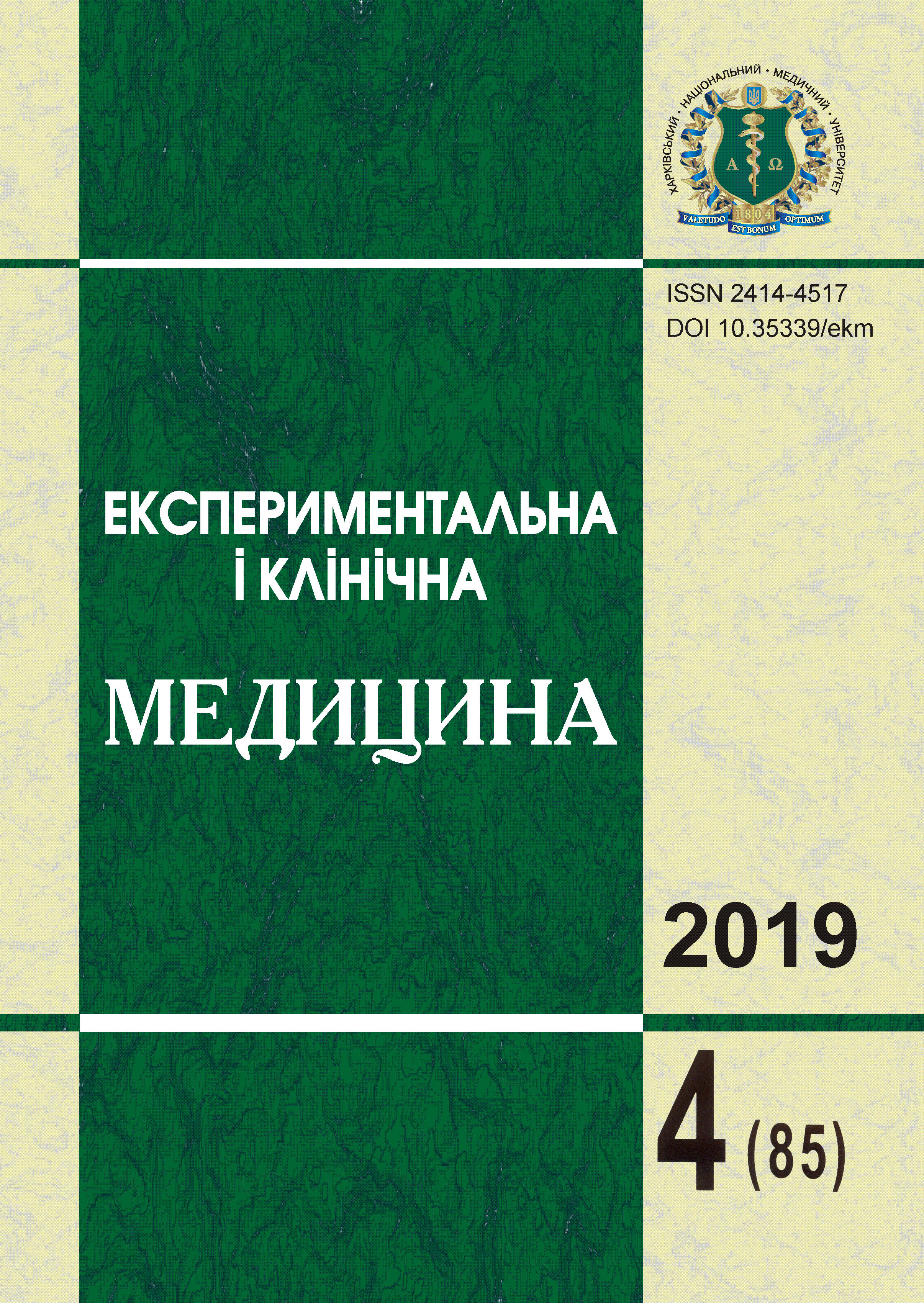Abstract
From 2015 to 2019, we performed surgical treatment of 136 patients for varicose veins of the lower extremities, of whom 74 patients were operated on by endovenous laser coagulation, 62 patients were operated on by radiofrequency ablation. The international classification of chronic venous insufficiency (CEAP) was used to distribute patients according to the severity of the disease. The indication for minimally invasive techniques was the presence of vertical reflux along the major and/or minor saphenous vein in combination with horizontal venous reflux in 95 % of cases. To perform radiofrequency ablation, the VNUS ClosureFast technique was used, and to perform endovasal laser obliteration, the «Lika-Hirurg» apparatus generating a wavelength of 1470 nm and radial (circular) light guides. To assess the results and quality of treatment, all patients underwent examination by a doctor with USDG of the operated lower extremity 1, 6 and 12 months after the treatment. Patients completed the Chronic Venous Insufficiency Questionnaire (CIVIQ 20) before surgery and 6 months after treatment. In all 136 patients, pathological venous reflux was not observed. In 2 patients, 6 months after EVLK, when performing ultrasound control in the trunks of the great saphenous vein, segmental recanalization without pathological reflux was determined. The use of radiofrequency ablation and endovasal laser coagulation of veins in the treatment of varicose veins shows positive results, and in most cases better than in classical surgical interventions, which is primarily due to the low trauma. One of the factors is the short duration of the patient's stay in the clinic and its activation immediately after the operation, which allows maintaining the routine of daily life.
References
Bogachev V.Yu., Kirienko A.I., Zolotuhin I.A. et al. (2004). Endovazalnaya obliteratsiya bolshoy podkozhnoy venyi pri varikoznoy bolezni [Endovasal obliteration of the great saphenous vein in varicose veins]. Angiologiya i sosudistaya hirurgiya - Angiology and vascular surgery, № 10, рр. 93-100 [in Russian].
Savelev B.C. (2001). Flebologiya. Rukovodstvo dlya vrachey [Phlebology. A guide for doctors]. M.: Meditsina [in Russian].
Savelev V.S., Gologorskiy V.A., Kirienko A.I. et al. (2001). Flebologiya: Rukovodstvo dlya vrachey [Phlebology: A Guide for Physicians]. V.S. Saveleva (Ed.). Moskva: Meditsina, 647 p. [in Russian].
Kosinskiy O.V., Buzmakov D.L. (2013). Khronichni zakhvoryuvannya ven nyzhnikh kintsivok: struktura invalidnosti v Ukrayini za 2011 rik [Chronic diseases of the veins of the lower extremities: the structure of disability in Ukraine in 2011]. Klinichna flebolohiyavol - Clinical Phlebology, vol. 6 (1), pp. 87-88 [in Ukrainian].
Caradice D., Mekako I., Hatfield J., Chetter I. (2011). Randomized clinical trial of endovenous laser ablation compared with conventional surgery for great saphenous varicose veins. Br J Surg., vol. 98, pp. 501-510.
Rass K., Frings N., Glowacki P. et al. (2011). Comparable Effectiveness of Endovenous Laser Ablation and High Ligation with Stripping of the Great Saphenous Vein Two-Year Results of a Randomized Clinical Trial (RELACS Study). Arch Dermatol Published online September 19. DOI:10.1001/ 2011.272.
Shaydakov E.V., Petuhov A.V., Ilyuhin E.A. (2011). Kachestvo zhizni. svyazannoe s hronicheskimi zabolevaniyami ven [Quality of life associated with chronic venous diseases]. Flebologiya – Phlebology, vol. 5, № 3, pp. 64-68 [in Russian].

